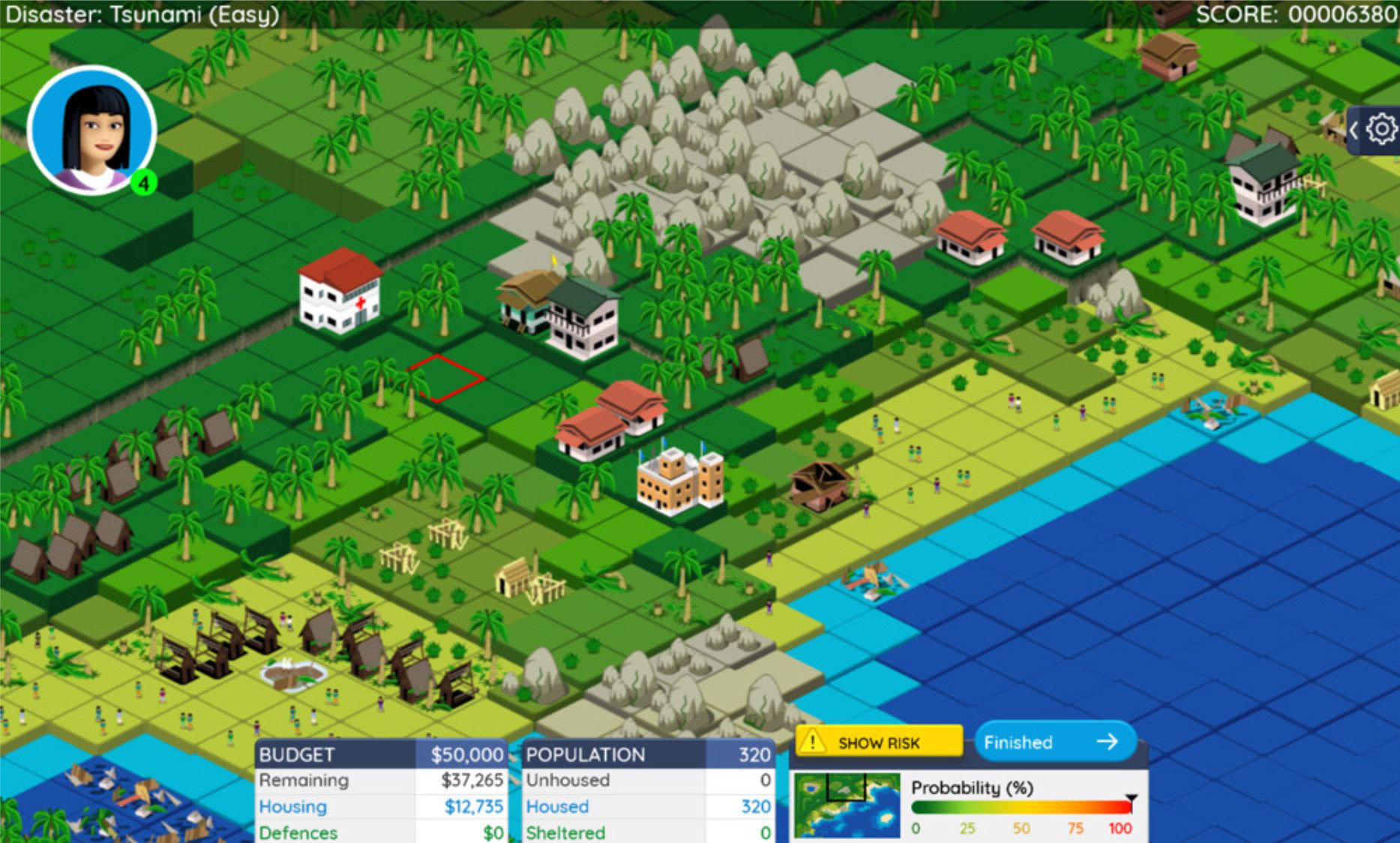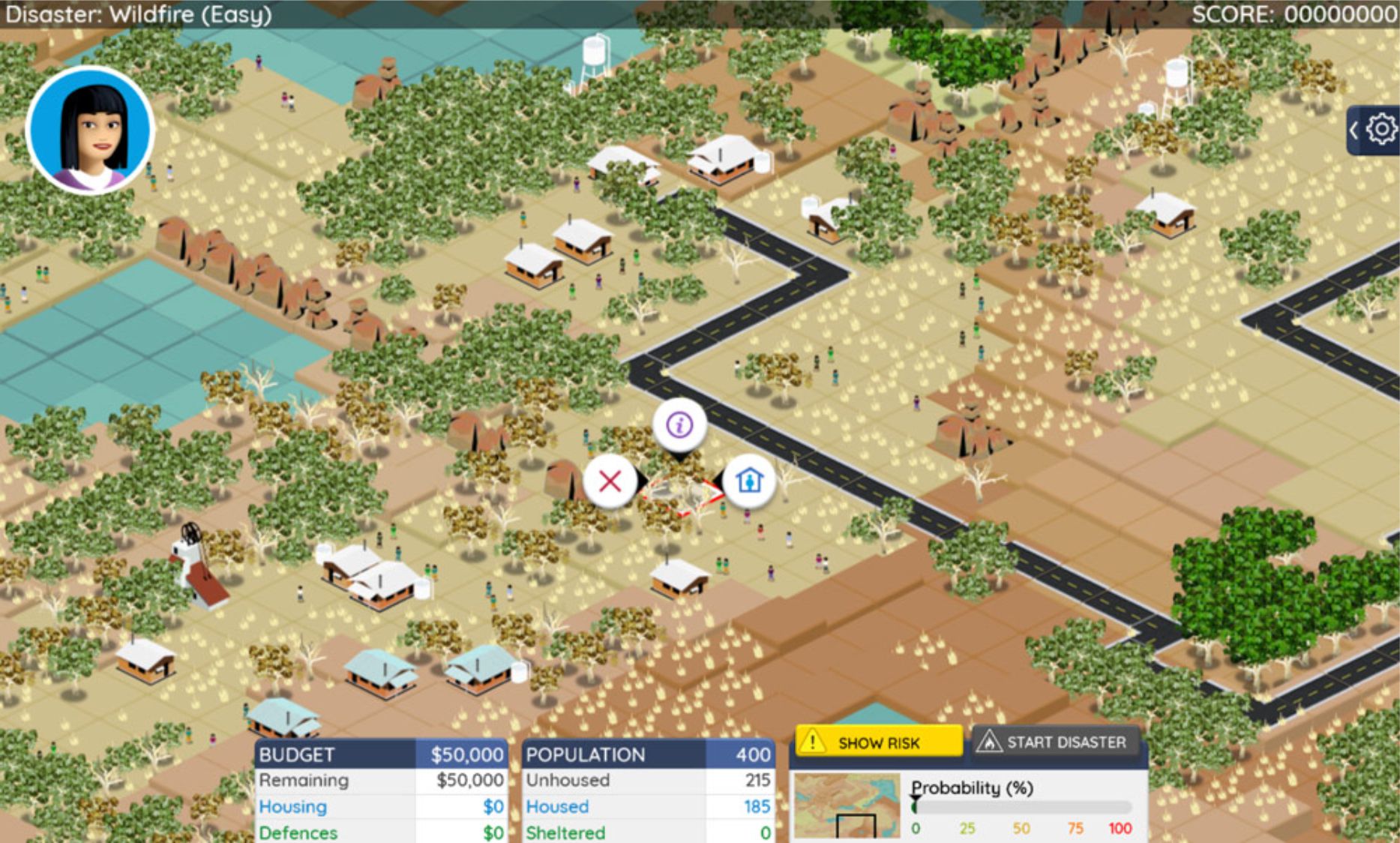
FUN WAY
TO LEARN DISASTER THROUGH A GAME
Various natural hazards ranging from floods, tsunamis, earthquake and roaring hurricanes. It is probably not an easy feat to try to explain this to children. But there is actually a simulation game that educators can utilise so that children can learn how to respond to and mitigate disaster through an internet game.
The game was launched by United Nations in 2007 as part of World Disaster Reduction Campaign; it is simulating natural hazards and serves as an interactive educational tool for children. Targeted for age 9-16 years old audience, the player role is to plan and construct a safer environment for their local population by assessing disaster risk and limiting damage inflicted during a natural hazard strike.
The UN/ISDR secretariat developed the online video game based on the great success of the board game called “Riskland” for children aged 6 to 9, which was developed jointly with UNICEF. The Riskland game has been widely used worldwide in different languages, including local languages.
The on-line game called “Stop Disasters” (www.stopdisastersgame.org) aims at sensitising children on basic notions of disaster risk reduction in a fun and entertaining manner. Its main objective is to raise awareness about the issue but do not pretend to educate children on all the aspects of disaster risk reduction issues. The game is also supported by a website offering more information and teacher guides on natural hazards.
The game includes five natural hazard scenarios (flooding, tsunami, wildfire, hurricane and earthquake) set in five different geographic environments with three different levels of difficulty that require critical decision-making and strategic planning.
This online game aims at teaching children how to build safer villages and cities against disasters. Children will learn through playing how the location and the construction materials of houses can make a difference when disasters strike and how early warning systems, evacuation plans and education can save lives.
The player assumes the role of a contractor in charge of improving the area’s response to specific natural disasters. Within a set time limit, the player must manage their resources in order to construct and reinforce local buildings, conduct training, and purchase warning systems to help make the community safer.
Each scenario takes place in various locations around the world and focuses on disasters common to that area. For example, the tsunami scenario takes place in Southeast Asia, while the wildfires scenario takes place in Australia.
GAMEPLAY
The player is given a lot of freedom to make choices in the game. They can choose what to develop and where to develop it, and they can choose between developing buildings or creating defence systems. Once a structure is made, they can choose if or how they will upgrade it. The player has a set budget and they can decide how to distribute their money and which members of the population to spend it on.
The player is given a generic amount of time before a disaster strikes. They can use that time to invest in their community and build structures, create defences, and invest in warning systems and population training. Each scenario comes with a list of goals that must be met before the disaster strikes. For example, the player might have to build a school, house a certain amount of people, and develop the local economy (such as building a certain number of hotels). Each scenario also has some generic goals related to lowering the costs of the destruction and loss of life during and after the disaster. The challenge comes from managing the resources available: limited time and money and terrain-related building restrictions. The player is not given any implicit directions once the game controls are explained and is expected to figure out the game strategy on their own by clicking on objects and trying out different actions.
The game is a real-time, self-guided, point-and-click, grid-based map simulation. The player interacts with the game by clicking on objects on the map and on menus. All actions can be completed using a mouse. The player is expected to find information independently, and will be rewarded for exploring and making good choices with tooltips that appear after the action has been completed. This self-guided nature of the game drive the player to do multiple tries before correctly strategies the game play. reduces the learning component by preventing the player from acting purposefully on this information. A player’s knowledge may actually be minimized by this method because they may not be able to find all of the tooltips in the allotted time. However, the option to start the disaster early was useful as a self-guided feature because the player may finish before the time is up.
Written by : Ina Rachmawati | Source : www.stopdisastersgame.org, www.undrr.org, www.unric.org & web.cs.wpi.edu


